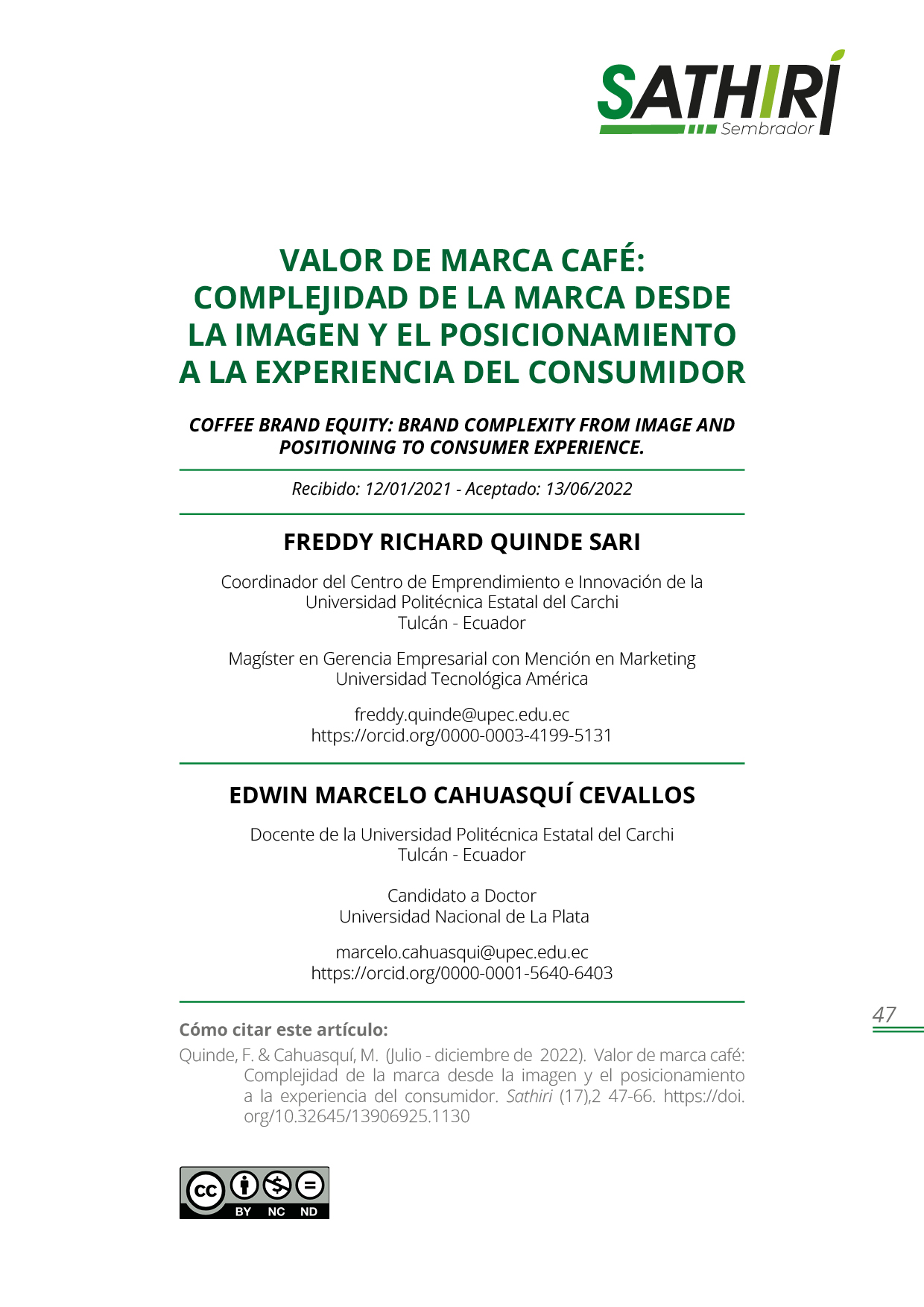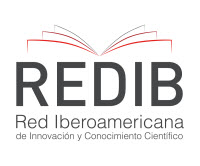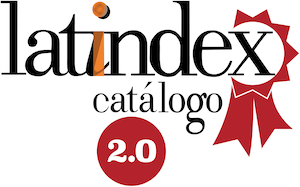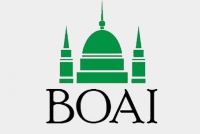Coffee brand equity.
Brand complexity from image and positioning to consumer experience.
DOI:
https://doi.org/10.32645/13906925.1130Keywords:
Brand value, Cognition, Conviction, Positioning, Perceptual mapAbstract
The brand value is consolidated as influential, respectable and commercial from the functional and emotional, this research aims to discuss the complexity of the brand from the cognition and conviction of the Imbabura and Carchi coffee consumer. To address the issue of cognition and conviction, a quantitative approach was necessary.
The statistical exercise carried out admits the alternative hypothesis: the conviction indices (quality and image) are positively and significantly related to the cognition indices (notoriety and loyalty), managing to explain the reasons why each of the brands studied obtained their position in the brand value ranking (Brand Equity). Thus, the market of Carchi and Imbabura is led by Nescafé, followed by Si Café, Minerva, Juan Valdez and Oro. These 5 companies take advantage of the perceptive scenario that 12 coffee brands leave raised, determining a complex scenario between the perceived image of quality and consumer loyalty. Nescafé has proportional indexes of brand value like Si Café and Minerva, while the brand value achieved by Juan Valdez emphasizes the perception of image and quality. It is concluded that the tastes, needs and preferences of the consumers surveyed show that the behavior of buying coffee after the external influence of the marketing effort has the path of cognition, image to accept conviction. Therefore, the importance of strengthening the cognitive and conviction indices is focused on the construction of a brand value that, in turn, also affects the creation of the value of the product as the key to commercial success in this market.
References
Aaker, D. (1991). Managing Brand Equity Capitalizing on the Value of Brand Name. New York.
Aaker, D. & Álvarez del Blanco, R. (1994). Capitalizar el valor de marca, Harvard Deusto Bussines Review, N 61.
Aaker, D. & Jacobson, R. (2006). The value relevance of brand attitude in high-technology markets.
Trends in Global Marketing Strategies.
Alzate, J. & Orozco, J. (2017). Stakeholders, actores estratégicos en la construcción de marca. México.
Calo, M. & Wise, T. (2005). Revaluing Peasant Coffee Production: Organic and Fair Trade Markets in Mexico. Global Development and Environment Institute Tufts University.
Gaskin, J. (2021). Nombre de la sección. StatWiki de Gaskination. Recuperado de: http://statwiki.gaskination.com.
Gómez, C. (2019). Percepción de la calidad en el servicio en clientes y colaboradores de una empresa de comercialización de materiales para la construcción en cinco entidades de México. Universidad de Ciencias y Artes de Chiapas.
Gotteland, M. (2007). Algunas verdades sobre el café. Scielo.
Hair, J., Black, W., Babin, B. & Anderson, R. (2010) Multivariate Data Analysis. 7th Edition, Pearson, New York.
Keller, K. (1993). Conceptualizing, measuring and managing customerbased brand equity. journal of Marketing, 1-22.
Kotler, P. (2006). Marketing Management (13th Edition). Mcgraw-Hill.
Kotler, P. & Armstrong, G. (2008). Fundamentos de Marketing. Mcgraw-Hill.
Llopis, E. (2011). Brandinggamp. Recuperado de: http://es.calameo.com/read/004078983b 9644e4b9bd8
Malhotra, N. & Dash, S. (2011). Marketing Research an Applied Orientation. London: Pearson Publishing.
Meza, A. (2016, noviembre 01). El Valor de las Marcas – Brand Equity. Recuperado de: https://www.infosol.com.mx/wordpress/el-valor-de-las-marcas-brand-equity/
Meza, N.; Medrano J.; Martínez M.; Grave de Peralta, M. & Cabrera Hechavarria, Y. (2017). Efecto anticariogénico del café. Correo Científico Médico de Olguín.
Torres, C. (2000). Valoración de intangibles. Universidad Rovirai Virgili.
Vera, J. (2008). Perfil de valor de marca y la medición de sus componentes. Revista Latinoamericana de Administración. No. 61. Pág. 69-89.

Downloads
Published
Issue
Section
License
Copyright (c) 2022 Freddy Richard Quinde Sari, Edwin Marcelo Cahuasquí Cevallos

This work is licensed under a Creative Commons Attribution-NonCommercial-NoDerivatives 4.0 International License.
El autor mantiene los derechos morales e intelectuales de su obra, autorizando a la editorial de la revista Sathiri la difusión y divulgación de su contenido con fines estrictamente académicos y de investigación, sin fines de lucro. Así mismo, se autoriza que la obra sea descargada y compartida con otras personas, siempre y cuando no sea alterada y se reconozca su autoria.




















